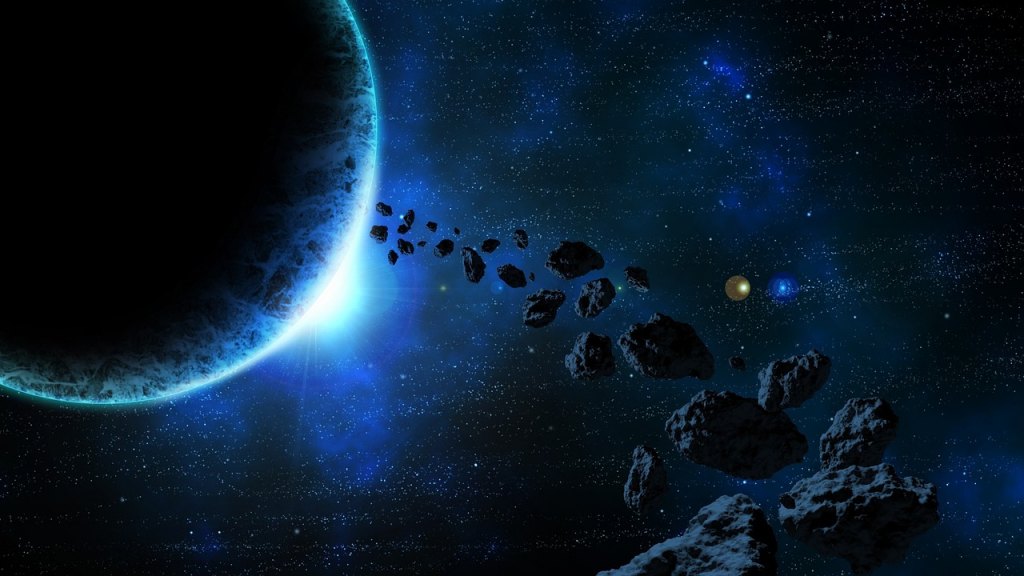
Credit: UKT2
The Asteroid Institute, a space discovery solutions program of the B612 Foundation, announced yesterday its discovery of 104 new asteroids with the help of an often-used business tool, Google Cloud. Leveraging the platform’s algorithms and cloud computing tools, the institute surveyed deep fields in outer space and mapped out the locations of asteroids. This led to its recent discovery and will enable the organization to pinpoint the location of more asteroids in old datasets.
The institute maintains an astrodynamics system, run on Google Cloud, known as Asteroid Discovery Analysis Mapping (ADAM). The system employs a powerful algorithm called Tracklet-less Heliocentric Orbit Recovery (THOR) to discover new asteroids. By relating light origins with asteroid orbits, THOR can find new asteroids and pinpoint their orbits.
What’s remarkable about ADAM’s technology is that it doesn’t require telescopes to discover heavenly bodies. According to The Asteroid Institute, the newly discovered asteroids weren’t seen previously because of the lack of computational power. And the development of ADAM and THOR made this possible, along with Google’s cloud applications. Besides cloud storage, the apps tapped by ADAM include the Google Compute Engine and Google Kubernetes Engine.
Interestingly, this partnership between Google Cloud and The Asteroid Institute isn’t the first time cloud computing was leveraged to conquer new ground in space discovery. Just last week, IBM and Red Hat collaborated with EnduroSat to launch a nanosatellite that harnesses edge and cloud computing. Several years prior to this, NASA started leveraging cloud computing to further its space exploration initiatives and streamline the organization’s workflows.
So, what makes cloud computing such an effective tool for space projects?
Pushing the Boundaries of Astronomy
It appears that space navigation is a prevalent cloud computing trend, given its long list of cloud-related use cases. As seen with ADAM, cloud computing’s storage and computational capabilities enable powerful algorithms like THOR to run. Meanwhile, NASA leverages Amazon Web Services to archive its current library of images and videos. The competencies of cloud computing were also on full display when Microsoft Azure was leveraged to monitor the health of astronauts on the International Space Station.
At the center of these cases is the reduced latency in space afforded by cloud computing. Cloud ecosystems enable users to quickly transfer and process data on shared servers, even from outer space. This is made possible by infrastructures like data centers and nanosatellites deployed on Earth’s lower orbit. Moreover, data transfers on the cloud are typically conducted with enhanced security.
The types of space data processed by astronauts and researchers through cloud computing are seemingly boundless. Besides satellite images and videos of planets, the space-related uses of cloud computing include research and discovery of heavenly bodies, astronaut healthcare, spacecraft design, space agriculture, and determining the habitability of space ecosystems. These uses are likely to multiply in the near future as technology continues to advance.
Complementing cloud computing in astronomy is edge computing. As powerful as cloud computing is, it is limited by the breadth of its network from a centralized location, and this is where edge computing takes over. Typically used for IoTs, this computing paradigm works with a remote station that handles local computing tasks instead of coursing data to a centralized data center. It is generally faster than cloud computing, which is why it is often used to send and process time-sensitive space information. Meanwhile, non-time-sensitive data is usually handled with cloud computing.
Given the still-untapped potential of cloud and edge computing in astronomy, the recent discovery of new asteroids might only be the start of a series of space-related breakthroughs that humankind would likely experience in the next few years.






















Leave a comment!